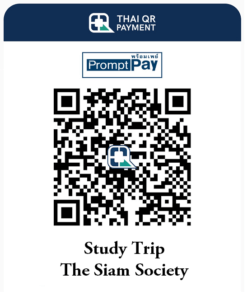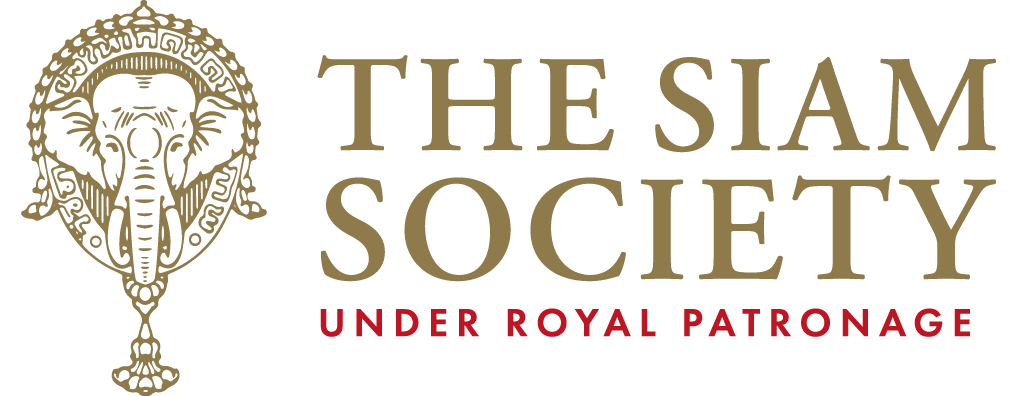A recollection of Sukhothai Period Ruins at Sukhothai, Si Satchanalai and Kamphaeng Phet Historical Parks
At the 1991 session in Carthage, Tunisia, Sukhothai, Si Satchanalai and Kamphaeng Phet Historical Parks were recorded on the World Heritage List by the World Heritage Committee of the Convention Concerning the Protection of the World Cultural and Natural Heritage, because of the abundant evidence of the sublimity and magnificence of architecture in the Sukhothai Kingdom.
As Thailand’s first capital, Sukhothai flourished from the mid-13th century to the late 14th century. The Sukhothai kingdom is viewed as the “golden age” of Thai civilization – the religious art and architecture of the Sukhothai era are considered to be the most classic of Thai style. During this period the Sukhothai kingdom received Theravada Buddhism from Sri Lanka; Singhalese artistic influence appeared in Sukhothai art, more prominent in architecture than in sculpture.
Sukhothai Historical Park: The original capital of the first kingdom was surrounded by three concentric ramparts and two moats bridged by four gateways. Today the remains of over 20 historical sites and four large ponds can be seen within the old walls, with an additional 70 sites within a 5 km radius. The Sukhothai ruins have been declared a historical park and ranked as one of Thailand’s World Heritage Sites.
Si Satchanalai – Chaliang Historical Park: The Sukhothai period ruins in the old cities of Si Satchanalai and Chaliang, about 50 km north of Sukhothai. Architectural and archaeological remains found in this historic town clearly indicated that it was not only a politically important town, but also an important religious centre. The importance of the town was apparent long before the town was included in the Sukhothai kingdom. The ruins of Si Satchanalai are set among hills and are very attractive in the sense that they are not having been visited as much as the Sukhothai ruins. During the time of King Li Thai, who ruled Si Satchanalai before ascending the throne at Sukhothai, many temples were built and restored at Si Satchanalai. Later, when Sukhothai fell under the power of the Ayutthaya Kingdom, Si Satchanalai still maintained its status as an important town, governed only by a member of the Sukhothai royal family, and later the status of Si Satchanalai changed to that of a secondary outpost, with a ruler appointed by Ayuttaya. A large number of religious buildings and temples in Si Satchanalai were constructed from laterite, which is found locally. These religious structures were normally coated and decorated which stucco and were considered highly artistic achievements. The most important historic monuments are inside the city walls.
Tao Thu Rieng Ban Ko Noi: There are a group of glazed ceramic kilns located on the west bank of the Yom River about 1-5 kilometres from the historic Si Satchanalai town. Two groups of kilns have been excavated and developed into the site museums.
Kamphaeng Phet Historical Park: Ancient monuments in Kamphaeng Phet and Nakhon Chum was officially opened as Kamphaeng Phet Historical Park in 1991. The historical park is on the east bank of the Ping River, covering an area of about 3.4 square kilometres and divided into 2 zones:
-
- A zone within the town wall covering an area of 503 Rais, including Wat Phra Kaeo, Wat Phra That, the ancient Palace area, Siva Shrine, the town wall and fortifications.
-
- A zone outside the town wall, known as the Aranyik area, covering an area of about 1,611 rai on a mound or small hill. The group of ancient monuments in this area consists of 40 temples, both large and small. About 10 temples in the Aranyik area is a unique feature of Kamphaeng Phet.
Densely located on a single piece of land on a mound, these ancient monuments were artistically constructed. Amidst the well-preserved forest and retains the atmosphere of forest temples in the olden days
- A zone outside the town wall, known as the Aranyik area, covering an area of about 1,611 rai on a mound or small hill. The group of ancient monuments in this area consists of 40 temples, both large and small. About 10 temples in the Aranyik area is a unique feature of Kamphaeng Phet.
In former days, Kamphaeng Phet (Diamond Wall) was known as Cha Kangrao or Nakhon Chum. Kamphaeng Phet province is in the lower part of the northern region, about 374 kilometres from Bangkok, the most convenient means of transportation is by road. There are neither railways nor an airport in this province.
Under the leadership of Khun Euayporn, The Siam Society is arranging a study trip for members to visit or revisit the historic monuments and museums in Sukhothai, Si Satchanalai and Kamphaeng Phet Historical Parks.
When
Leader
Khun Euayporn Kerdchouay, Senior Consultant of The Siam Society
Booking
Or contact Khun Supanut
supanut@thesiamsociety.org
The tentative programme will be as follows:
| Day 1: Saturday, 6 August: Bangkok – Kamphaeng Phet – Sukhothai | |
| – | Meet at The Siam Society, 131 Asoke Montri Road, Sukhumvit 21, Bangkok. |
| 07:30 | Depart the Society for Kamphaeng Phet Historical Park in Kamphaeng Phet Province by bus (374 km.) |
| Enroute: | Visit a few of ancient Sukhothai period ruins in Nakhon Chum. Nakhon Chum is located at the mouth of Suan Mak Canal on the west bank of the Ping River, opposite Kamphaeng Phet old city. The town was rectangular in shape and enclosed by three ramparts. At present, the town walls and ancient monuments have almost disappeared because of construction and agriculture. |
| Noon: | Lunch at a local restaurant in Kamphaeng Phet. |
| After lunch: | Visit Kamphaeng Phet National Museum and Kamphaeng Phet Historical Park. |
| Most of the ancient monuments in Kamphaeng Phet Historical Park are temples dedicated to Theravada Buddhism, which was adopted from Sri Lanka and dated back to the late 13th century, or the reign of Phra Maha Dhamaraja Lithai. Like the ancient monuments of Nakhon Chum, these Buddhist temples were built in the Sukhothai style, with in fluences from Ayutthaya and Lanna. There are two groups of ancient monuments in Kamphaeng Phet, one within town wall and the other in the forest. Most of the pillars of the vihara were mostly made of laterite, rectangular or octagonal in shape and covers with stucco. The upper part of the building was made of wood, and the roof was covered with tiles, only the pillars and walls of each vihara remain. A chedi as the main building of a temples can be divided into two types, The Lotus Bud Chedi or The Circular or Bell-shaped Chedi. The group will visit Wat Phra Non, Wat Phra Si Iriyabot, Wat Singha, Wat Chang Rop, and Wat Avasa Yai. | |
| 16:30 | Depart Kamphaeng Phet province for Sukhothai Province. |
| 18:00 | Arrive at Sukhothai Historical Park and check in at the resort near the park. |
| Evening: | Dinner and overnight at the resort. |
| Day 2: Sunday, 7 August: Sukhothai – Si Satchanalai – Sukhothai | |
| 07:00 | Breakfast at the resort. |
| 08:00 | Depart the resort for Si Satchanalai Historical Park. |
| Enroute: | Visit Sawanvoranayok National Museum at Sawankhalok district. |
| – | Arrive at Chaliang and visit Wat Phra Si Ratana Mahathat, Wat Chom Chuen, and Wat Chao Chan. |
| Noon: | Lunch at a local restaurant near Si Satchanalai Historical Park.
|
| After lunch: | Visit many temples and historical buildings in Si Satchanalai Historical Park, the City Wall, Historical Monuments on the hill and Ban Pa Yang Kilns Site. |
| 17:00 | Depart Si Satchanalai Historical Park for Sukhothai province. |
| 18:00 | Arrive at the resort near Sukhothai Historical Park. |
| Evening: | Dinner at a local restaurant and overnight at the resort. |
| Day 3: Monday, 8 August: Sukhothai – Phitsanulok -Bangkok Donmueang Airport | |
| 07:00 | Breakfast at the resort. |
| 08:00 | Visit many ancient monuments within the city wall of Sukhothai and those outside the city wall. |
| Noon: | Lunch at a local restaurant in Sukhothai. |
| After lunch: | Visit Sukhothai National Museum within the Sukhothai Historical Park. |
| Afternoon: | Proceed to Phitsanulok Airport and check in at Nok Air counter. |
| 18:55 | Depart Phitsanulok Airport for Bangkok Donmueang Airport by Nok Air flight DD209. |
| 20:00 | Arrive at Bangkok Donmueang Airport. |
| The Siam Society reserves the right to change the programme as necessary. | |
Booking
Important notes:
– The Society requires all study trip participants to be fully vaccinated. We kindly ask that you attach appropriate proof(s) along with your registration.
– To comply with the measures set forth by the government in regards to the COVID-19 pandemic and in order to protect yourself and others around you, the Society kindly asks our participants to follow the appropriate safety and precautionary measures as stipulated by the government and health organisations.
– The Siam Society may utilise photos taken from study trips, lectures, performances, and other activities as part of its public relations and marketing campaign. These photos, which may sometimes contain image(s) of activity participants, can also be featured on the Society’s website and other online social media channels.
– As part of our effort in addressing the issue of global warming, The Siam Society strongly supports the reduction of plastic waste. We kindly recommend that trip participants bring their own water flask, if possible.
The contribution of THB 21,000 (THB 22,000 for non-members), single room surcharge THB 2,000, will cover airfare, transportation, meals as mentioned in the programme, gratuities and other costs incurred to make this trip possible. In addition, basic travel insurance is included. There is a 4% surcharge for credit/debit card payment to cover bank charges. Please pay by cash or cheque payable to “The Siam Society”. Transfers can also be made to The Siam Society travel account at TMBThanachart Bank (ttb), savings account no. 053-2-18000-7 or by scanning the QR code below. Once payment has been made, please fax or e-mail the deposit or transfer docket to us.

For further information and bookings please contact Khun Prasert at Tel. 02-661-6470-3 ext. 504 or Khun Supanut Tel. 02-661-6470-3 ext. 506, Fax 02-258-3491 or email: supanut@thesiamsociety.org. The Society office is open from 09:00 to 17:00, Tuesday to Saturday.
More upcoming study trips
-

-
 Echoes Across the Mekong: Rock Art of Pha Taem and Wonders of Southern LaosStudy TripsThursday, 15 to Sunday, 18 January 2026
Echoes Across the Mekong: Rock Art of Pha Taem and Wonders of Southern LaosStudy TripsThursday, 15 to Sunday, 18 January 2026 -
 Missionaries, Diplomats and Teak-Wallahs: The Built Heritage of Chiang Mai, 1867 - 1941Study TripsSaturday, 29 to Sunday, 30 November 2025
Missionaries, Diplomats and Teak-Wallahs: The Built Heritage of Chiang Mai, 1867 - 1941Study TripsSaturday, 29 to Sunday, 30 November 2025 -

-
 The Painted Landscape and the Hidden Heritage: A Visit to The Three Corners of Isan’s CultureStudy TripsFriday, 24 to Sunday, 26 October 2025
The Painted Landscape and the Hidden Heritage: A Visit to The Three Corners of Isan’s CultureStudy TripsFriday, 24 to Sunday, 26 October 2025
